My first time in HCMC, Vietnam! When I visit a city, I like to rate it across some criteria which gives me a comparison. You can check other city reviews at the end of today’s post.
Ho Chi Minh officially replaced Saigon in 1976, after the Vietnamese leader who asserted independence from France in 1946. Saigon was the capital of the French colony of Cochinchina from 1859 to 1945 and then the capital of the independent republic of South Vietnam from 1955 to 1975. Many of us associate Saigon with the long war in that region. Today the city, the largest in the country, is a vibrant metropolis and tourist hot spot.
All photos are by C Maneedul and for the reason why I am in a sling check out my January 20 post: Travel insurance Rocks!
Aesthetics: 7 out of 10
Most tourist activity takes place in District One, one of 24 districts across the city. This is essentially downtown Saigon.
The City isn’t as built up as say Bangkok or Kuala Lumpur but the city is going through a period of rapid development with construction sites everywhere. Modern buildings sit cheek to jowl with thatched shacks and Colonial structures. Street cleaners in bright orange uniforms keep elegant wide boulevards and footpaths spotlessly clean. There are many statues and parks that honour Vietnam’s past.
The streets are busy, with motorbikes making up 70 per cent of the traffic. The rest are largely taxis and buses with a few private cars. The quality of the air is still good. There are pavement vendors selling food, clothes and souvenirs all across the city.
A lot of life takes place along and on the very pretty but very polluted Sai Gon river.
The suburbs are more dull with less greenery than the downtown area. Many new shopping completed are opening up across the city which may change city life.
Culture: 9/10
Saigon is considered to be one of the best street food cities in the world. Food (see Top Ten List below) is amazing.
If you want to learn to cook, there are cooking classes all over the city. I must admit, I am too lazy and would prefer to get someone else to shop, prepare and cook! You can also learn to make rice paper, learn bonsai and how to give a massage!
HCMC has a great range of movie (Mua Ve) theatres, many of which show English and French films in their original languages with Vietnamese subtitles for $US3 to $US5 a ticket. Concerts, plays and other events take place year-round. The city has a good range of interesting museums (see below) and a fantastic Fine Arts Museum as well as smaller art galleries.
Karaoke is a national pastime, and we saw brightly coloured Karaoke signs everywhere! The Vietnamese take it very seriously. Alternatively, there are many places to listen to traditional and popular Vietnamese music.
Crime and Safety: 9/10
Ho Chi Minh is a very safe city with low crime rates. As tourism grows so does petty crime against tourists. . There are lots of warnings about the city all the time. it’s hard to know if the fear stories are fact or urban myths. There are rumours of bag snatching by people on motor bikes. We also heard tales of such thieves being set upon by locals and the goods being immediately returned, As per usual, be wise. Remember, the average Westerner earns 30 times the average Vietnamese person. Watch ostentatious jewellery, cameras and or having lots of money visible.
We heard dire warnings of being ripped off or not being given change. We found the opposite. People went out of their way to ensure we were properly charged and compensated.
The most amusing sight is that of westerners trying to cross the road. The traffic is crazy in HCMC but there is an almost musical way of crossing roads. Wait for a gap in car and bus traffic and walk at a steady pace from one side of the road to the other without stopping. Look BOTH ways. Cars sometimes drive on the wrong side of the road. Motorbikes veer around pedestrians. Having said that, the traffic fatality rate is very high when compared to European countries. Many cars lack seatbelts and driving is “very creative” at times. You may see a “Tourist Police Officer”. They provide directions, and help with crossing the road than helping with crime.
Key numbers are: 113 – Police, 114 – Fire and 115 – Ambulance/First Aid.
Liveability: 6.5/10
Eight million people call HCMC home. This is expected to grow to over 13 million in a decade. The city covers almost one per cent of the land surface of Vietnam. It is 102 (63 miles) long and 47 kilometres (29 miles) wide. Population density is 3,590 people per square kilometre (29,294 per sq mile). This is about the same as Los Angeles (3,176/km2), ten times more crowded than Sydney, and not as crowded as Bangkok ( 5,300/km2 ).
HCMC is a tropical city with a cooler dry season from December to April when temperatures may drop as ow as 16 degrees celsius (61 F) at night! May to November is the rainy season. All in all, it rains for 150 days a year! In July, August and September, you can count on rain most days.
The Economist rated HCMC 126 out of 140 of its most liveable cities in 2010. The cost of living in Vietnam is very low. Numbeo estimates that the cost of living is 45% that of living in New York City. Sample prices here.
Transport: 7/10
There are over 130 local bus routes around the city. Many of the buses start and finish at the Ben Thanh bus station next to the market. Buses are air conditioned, have a driver and cost around 10 to 20 US cents a trip. People are very helpful. Bus 152 connects the airport and 149 the train station. Bus maps are posted at some (but not all) bus stops.
HCMC is building a metro system which will hopefully open around 2017.
Metered Taxis are an incredibly cheap transport option. The two best companies are Vinasun (white cars with red and green stripes) and Mailinh (green cars or white and green cars). They have unformed, knowledgable drivers who seem to drive calmly and effortlessly through the most unbelievable traffic chaos. You will sometimes see taxis with close approximations of these taxi companies. If the driver does not have a meter, does not have photo ID and does not start the meter, hop out. Many hotels have their own taxi companies contracted and these can be a little more expensive but usually very reliable.
Men standing by their motorbike at the roadside will ask you continually if you need transport. Saw many locals blithely hopping aboard and zooming through the streets. Not for the faint hearted but definitely cheap!
Vibe: 9/10
HCMC is a vibrant, exciting almost 24/7 city. You cannot get bored!
Overall Verdict: 85%
My 33rd favourite city in the world- just after Amsterdam!
Top Ten
1. Walk and Watch
Exploring on foot is easy, and a great way to observe city life. people, discover, and learn more about their culture. There is plenty to occupy you in district one and well worth the walk. Plus you can get a massage for your feet anytime (see below).
Relax and enjoy the ever changing panoramas from the workmen playing card games in the street to the granny serving soup to office workers sitting at low tables on the footpath.
For variety, take a taxi or bus to district 5- Chinese District of Cholon or go to the gentrifying District 8.
Buenos Aires, Argentina (84%)
Incredible Istanbul (85%)


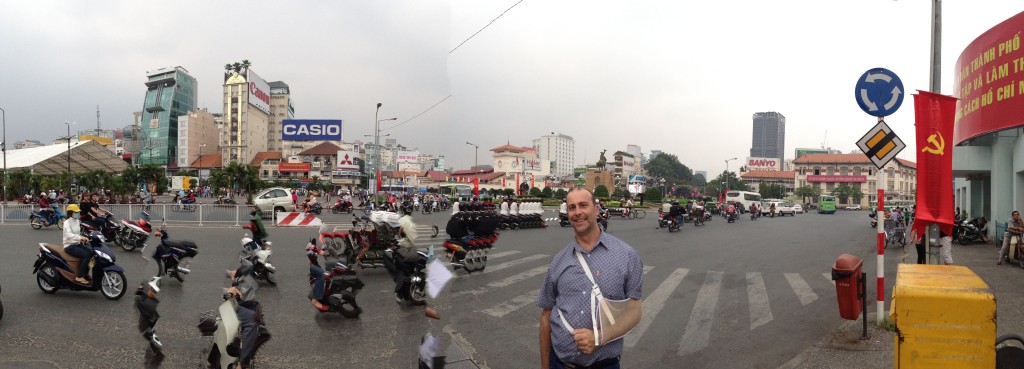
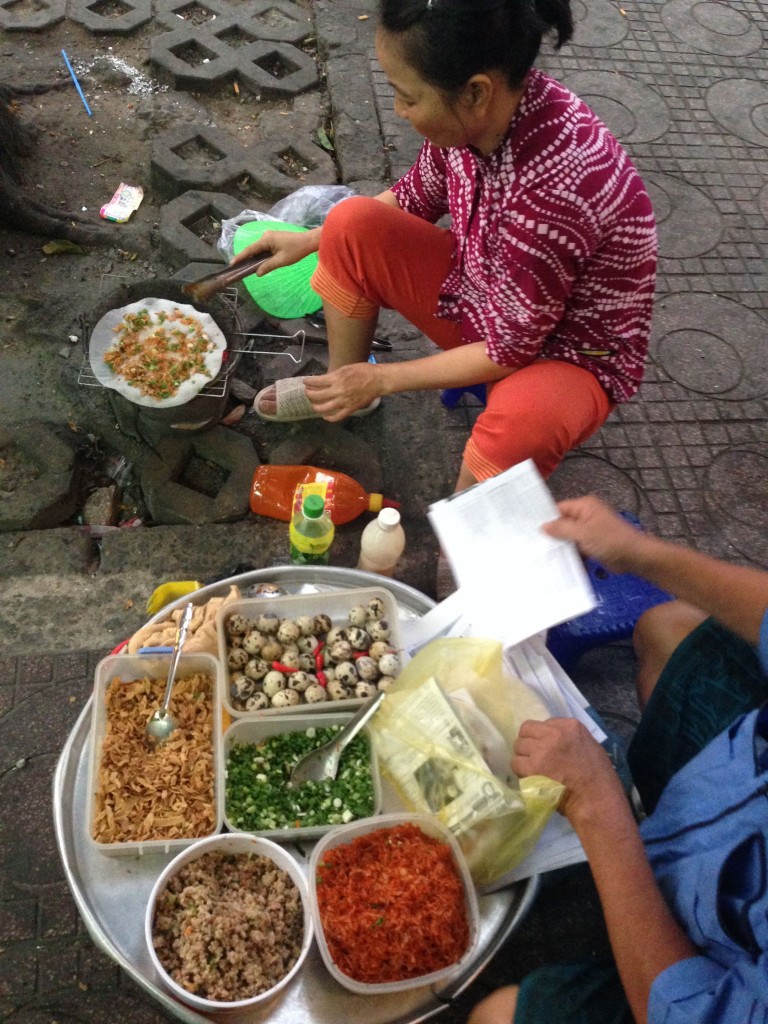
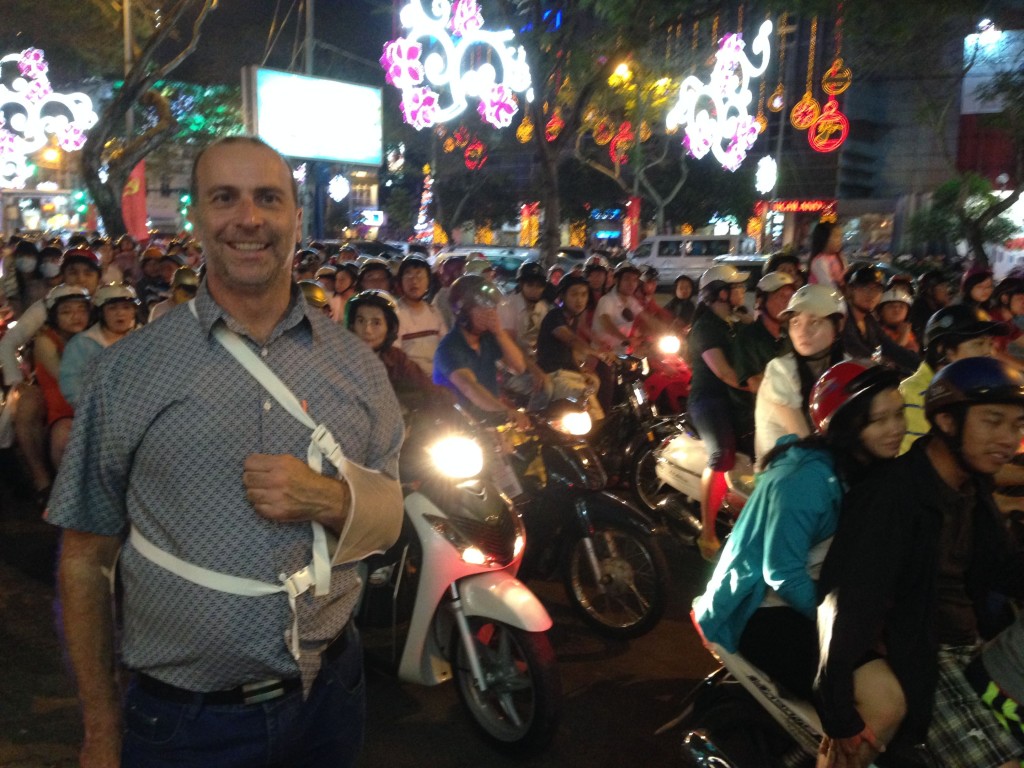
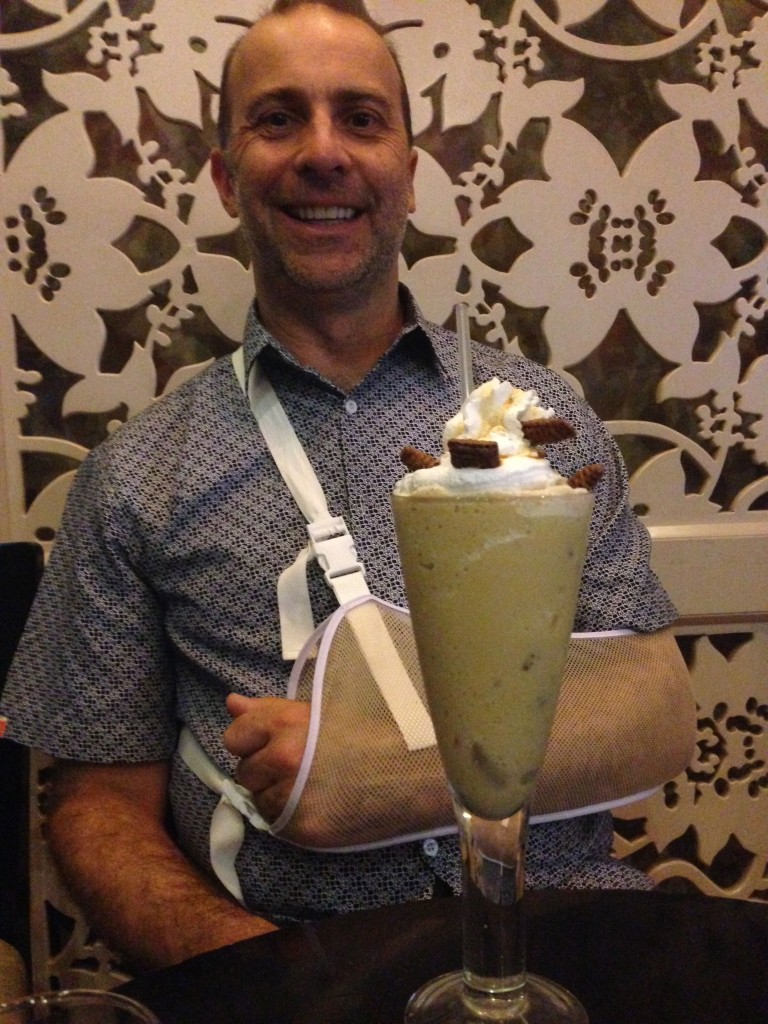 I had no idea that the Vietnamese are coffee freaks! Ca phe da (Black coffee with ice) is available nearly everywhere from small streetside vendors to coffee shop chains such as
I had no idea that the Vietnamese are coffee freaks! Ca phe da (Black coffee with ice) is available nearly everywhere from small streetside vendors to coffee shop chains such as 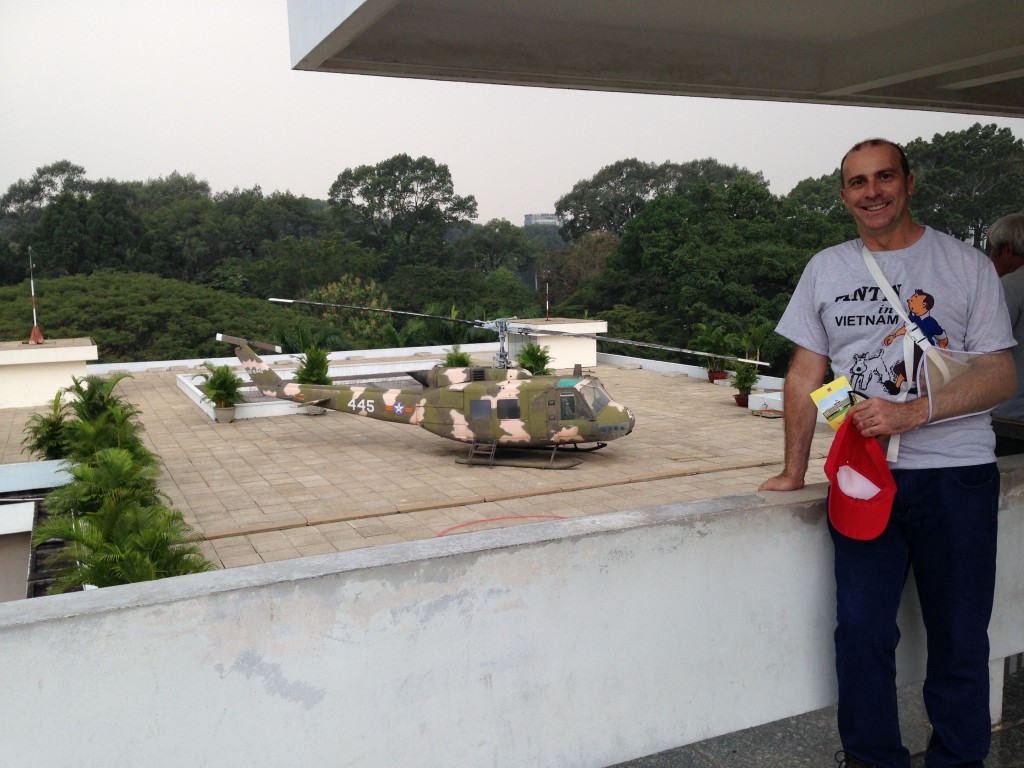
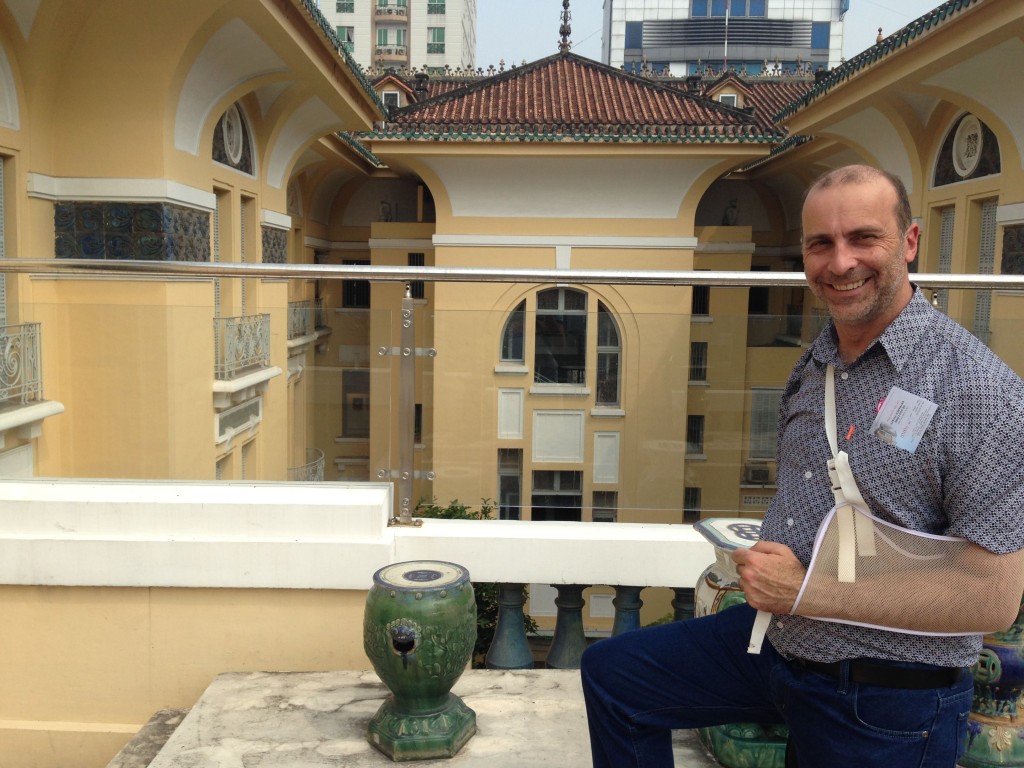
Great review Martin. I’m glad you had a great time and my people treated you well.
HCMC has a great range of movie (Mua Ve) theatres, many of which show English and French films in their original languages with Vietnamese subtitles for $US2.3 a ticket. Concerts, plays and other events take place year-round. The city has a good range of interesting museums (see below) and a fantastic Fine Arts Museum as well as smaller art galleries.